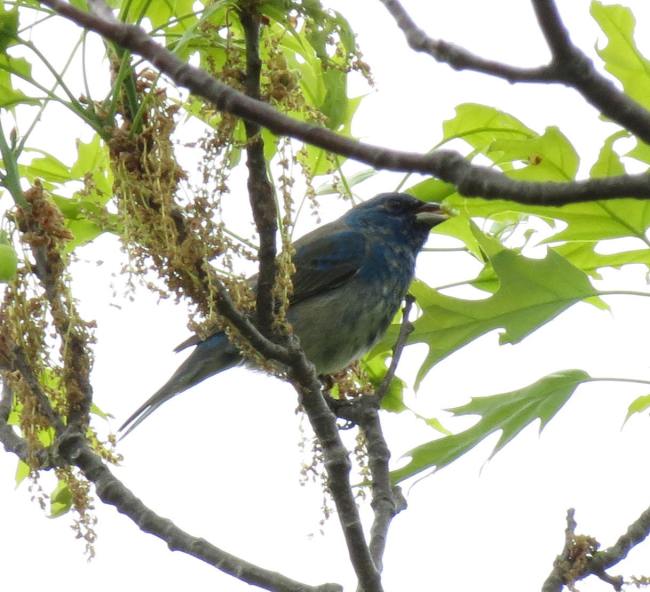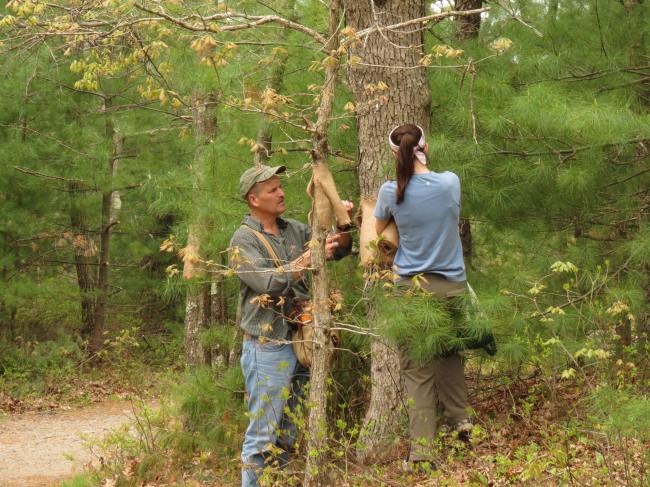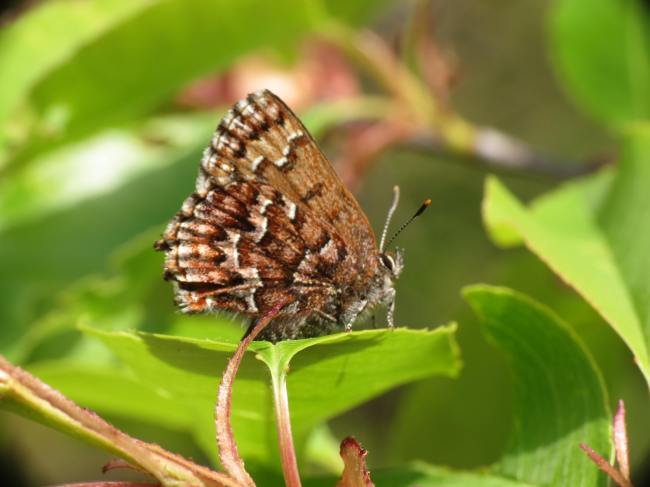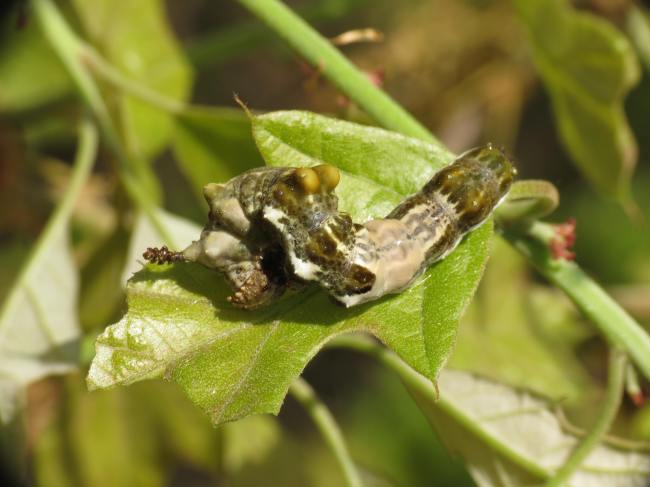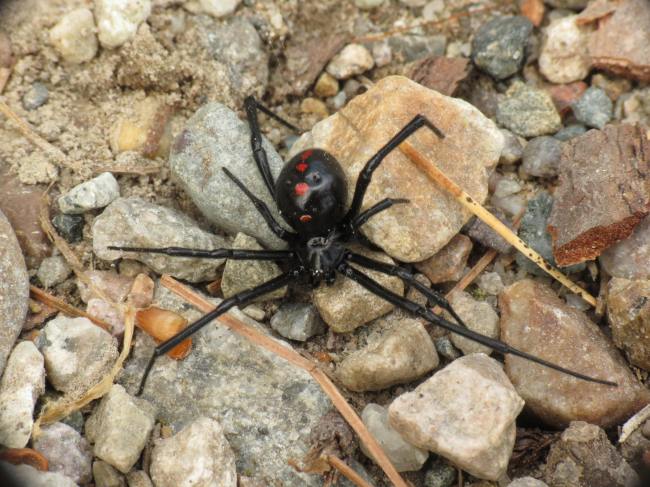
Possibly a Painted lichen moth (Hypoprepia fucosa).
I found a familiar little lichen moth caterpillar under a band today, but Dave believes it may be a different species that what I am used to. Last year I mainly found Scarlet-winged lichen moths (Hypoprepia miniata), but this specimen may be a Painted lichen moth (Hypoprepia fucosa). I collected one to rear so I’ll just have to play the waiting game now. Along with that were more Abagrotis and Haploa as well as a little brown geometrid that has not been identified. There have been a number of interesting adult moths resting on or hiding under the burlap too.
On my way down the slope, a particularly docile Duskywing offered me a good opportunity to practice close up shots of live lepidoptera with a Raynox macro lens attachment that I’ve acquired since last summer. I got some great pictures and when finally I became too prodding, the skipper took off, but it did something I’ve never seen one do before. Instead of erratically zipping away, it flew up above me to land upside down on a thin tree branch. It then relaxed its wings wrapping them around the branch making the animal blend in reasonably well. This behavior appeared very deliberate and from where I stood, it was hard to focus on the skipper any longer.
A final treat as I neared the bottom of the slope was a decent look at an Indigo Bunting (Passerina cyanea) that was foraging in the treetops. To my great delight, it appears to be eating an invasive winter moth caterpillar (Operophtera brumata) in this picture.







